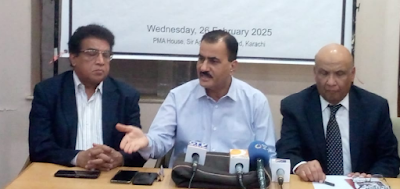Pakistan’s polio fight falters — Part 1: The data and the warning signs
As Sindh reports rising virus circulation and positive sewage samples,
specialists urge evidence-based reforms, better accountability, and investment
in water, sanitation, and primary healthcare
(Originally published in Social Track, a weekly from Karachi, this two-part report
dives into the persistence of poliovirus in Sindh and across Pakistan — despite
years of eradication efforts.)
By Mukhtar Alam
KARACHI: With
Pakistan remaining one of only two polio-endemic countries—alongside
Afghanistan—the situation in Sindh has raised fresh concern among medical
experts and public health observers. Over the 11 months since July 2024, the
province has reported 25 new cases of paralytic polio in children and 272
environmental samples testing positive for the virus—an alarming indicator of
what experts describe as the “suboptimal performance” of the province’s polio
eradication programme.
According
to official data, Pakistan has recorded 12 cases of wild poliovirus type 1
(WPV1) so far in 2025, with 326 positive environmental (sewage) samples across
the country. Of these, Sindh has contributed four cases (33%) and 125 positive
sewage samples (38%), underscoring the province’s disproportionate share of the
burden. Districts with ongoing environmental detections include Karachi East,
Malir, Central, Korangi, Keamari, South, West, Hyderabad, Badin, Jacobabad,
Jamshoro, Dadu, Sujawal, Sukkur, Mirpurkhas, Shaheed Benazirabad, Ghotki,
Thatta, Naushahro Feroze and others.
A former
senior official involved in the country’s polio eradication efforts, speaking
on condition of anonymity, said: “Sindh’s sustained virus transmission—despite
frequent large-scale campaigns—reflects not security issues but programme
failure. There’s a preference for optics over impact, and a reluctance to face
ground realities.”
Experts
interviewed also echoed these concerns. They warned that the continued
detection of poliovirus in environmental samples signals a troubling immunity
gap. “Many children who appear vaccinated on paper are likely missed in
practice,” one expert explained. “These unreached children become silent
carriers, excreting the virus and perpetuating its spread.”
The National Emergency Operation Centre in Islamabad notes that while cities like Karachi, Quetta, and Peshawar have not reported any new paralytic cases in 2025, environmental surveillance tells a different story. “Karachi, in particular, continues to show high virus circulation throughout 2024–25, while Quetta Block has seen some decline, and Peshawar maintains low-level detection.”
A health
concern highlighted a persistent challenge: “In some cases, parents either hide
their children or get them finger-marked without actual vaccination. So, while
official figures show reduced missed children, the immunity gap on the ground
remains dangerously wide.”
Despite
repeated efforts, key officials from the Sindh Health Department, Sindh
Emergency Operations Centre, and Sindh Expanded Programme on Immunisation (EPI)
did not volunteer to comment on the ongoing situation or respond to queries
regarding programme performance and response strategy.
Responding to the question of whether Sindh is failing to address the immunity gap, Dr Abdul Ghafoor Shoro, Secretary General of the Pakistan Medical Association (PMA), said the province is “significantly failing”.
“Data
clearly indicate widespread virus circulation and a persistent immunity
gap—pointing to suboptimal programme performance and a high number of missed
children due to access issues, refusals, and operational weaknesses,” he said.
Discussing evaluation and the way forward, Dr Shoro stressed that responsibility lies across multiple layers, including frontline workers, supervisors, emergency operations centres (EOCs), and independent monitors such as third-party agencies and academia.
“We must strengthen data quality, introduce accountability through digital systems and performance-linked incentives, address refusals through tailored communication and community engagement, refine micro-planning, and continuously build capacity.”
He also noted that while OPV-vaccinated children can excrete the virus, it becomes critical when population immunity is low—creating a risk for circulating Vaccine-Derived Poliovirus (cVDPV).
“The answer is not to wait for mutation but to ensure higher vaccination coverage. The shift to IPV helps here by curbing the emergence of cVDPVs.”
Asked whether success in the polio fight is possible without improving routine immunisation, Dr Shoro responded: “Absolutely, no. High routine immunisation coverage is fundamental—it builds lasting population immunity, closes immunity gaps, and offers a sustainable solution. It’s the backbone of eradication.”
On the question of reducing transmission through contaminated water and food, he flagged deeper systemic gaps. “Despite messaging on fecal-oral transmission and Water, sanitation and hygiene (WASH), we are not definitively ‘on track’ to reduce transmission without major and sustained investments in water and sanitation infrastructure—well beyond the polio programme’s immediate mandate.”
(To be continued)
Photos courtesy: official sources.








Comments
Post a Comment